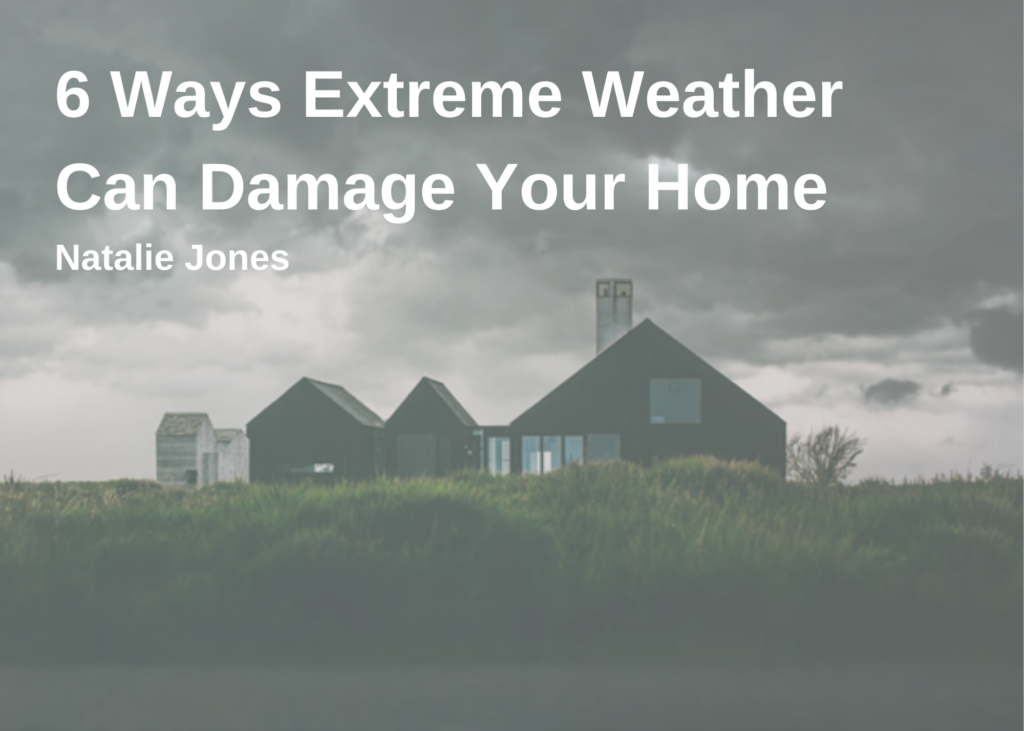6 Ways Extreme Weather Can Damage Your Home

Your home is the biggest investment you will ever make, and it is in every homeowner’s best interest to protect their home and investment from damage, especially the kind that can be brought on by extreme weather. Sure, you may not be able to control the weather, but you can inform yourself on how it can affect your house and prepare accordingly.
Roof and Siding Damage
Heavy winds can easily damage your roof or siding, as can strong direct heat, hail, and downpours. If left unattended, small dents and cracks can become extremely expensive problems. For this reason, it is important to know the signs of roof damage and to inspect your roof regularly. Look out for missing or cracked shingles, a sagging roof deck, leaks in the attic after rain, and a buildup of shingle granules in the gutters. It’s also important to keep in mind that a roof in disrepair can reduce the value of your home if you plan on selling in the foreseeable future.
Falling Trees
Falling trees are one of the biggest dangers associated with storms. You can reduce the chance of your trees falling by pruning them regularly (thus getting rid of dead or dying branches that are more likely to snap off) and making sure they grow a healthy root system through mulching and irrigation. If you are not a natural green thumb, it’s a good idea to bring in an arborist to deal with big trees once or twice a year.
Water Damage
Water damage from heavy rains and floods can be difficult to prevent, so it’s important to react quickly when there’s damage. According to Family Handyman, mold can start spreading in as little as 24 hours. Once you have cleared the water, check for mold and mildew: minor patches of it should simply be removed, but major mold issues will probably require professional attention.
Heat and Humidity
When you think of weather damage, you tend to think of winter storms. However, a hot summer can also be bad for your home. Humidity can build up in poorly ventilated areas like crawlspaces in the attic, leading to issues of mold and mildew. Poorly sealed windows and doors can also allow humidity to build up within the walls. Make sure every part of the home is ventilated in the summer, and check all the sealing around windows, doors, and pipes.
It’s not just humid heat you need to watch out for, however. Extreme dry heat can damage roof shingles, cause your foundation to shift and crack, and place additional strain on your AC. It can also warp and crack wooden flooring and wood furniture, which can be expensive to repair.
Frozen Pipes
According to Consumer Reports, frozen pipes are among the most common causes of property damage, which is a shame because they are easily preventable. A few things you can do to reduce the chance of your pipes bursting in subzero temperatures include adding insulation, keeping a trickle of water running, and maintaining the thermostat at a steady temperature.
Asbestos Exposure
Asbestos may not seem like a weather-related issue, but it becomes one during a natural disaster. Events like wildfires, storms, and floods can all damage asbestos-containing materials, thus releasing the substance. The most important thing to do is to test your home for asbestos and to know where it is (a professional inspection typically costs $400 – $800). Asbestos.com recommends you keep protective equipment like a respirator on hand so you can stay safe while you get help after a disaster.
As a homeowner, it’s important to be aware of the ways in which your asset is at risk, and to take the necessary steps to prepare for this. Regular checks of key areas of your house, like the roof, foundation, pipes, and siding, can help you identify weaknesses that could be worsened by bad weather. Extreme weather and natural disasters cannot be avoided, but the better informed you are, the more you will be able to mitigate the damage, and the faster you will be able to react.


Responses